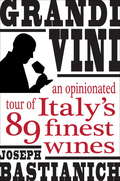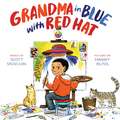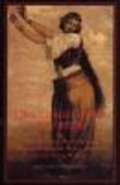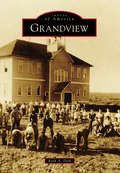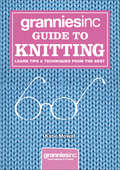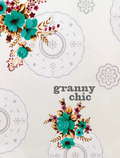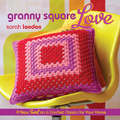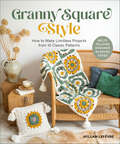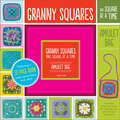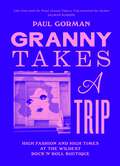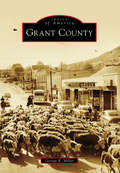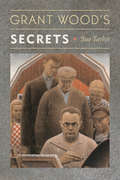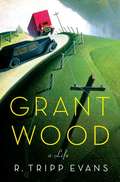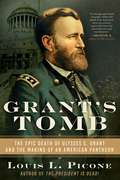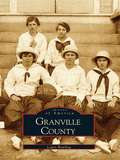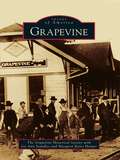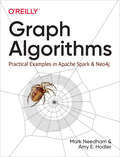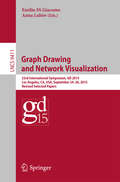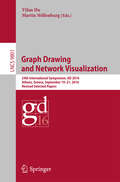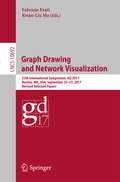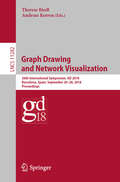- Table View
- List View
Grandi Vini: An Opinionated Tour of Italy's 89 Finest Wines
by Joseph BastianichJoseph Bastianich is steeped in Italian wines like no one else. Not only is he the co-owner, with Mario Batali, of some of America's premier Italian restaurants, but he also produces wine on four separate estates three in Italy and is responsible for bringing Eataly, the groundbreaking artisanal Italian food and wine marketplace, to New York. His thoughtfully honed list of favorite wines makes for a fascinating journey that brings Italian wines to life. Grandi Vini introduces readers to the greatest wines in Italy by bringing them to the vineyards and introducing the winemakers behind the bottles. More than simply appealing to the palate, the wines on Joe's list have made an impact on the industry. In Central Italy, he recommends a stunning Sangiovese in Emilia Romagna, produced at San Patrignano, the largest drug rehabilitation center in Europe. The island of Sicily is typically known for bulk commercial wine; but now, in the unique terroir of Mount Etna, wine lovers can discover the perfectly fresh, dry white Pietramarina, produced by the forward-thinking Benati family. And we can't forget the great Barolos. Bastianich selects a specific list of wines from this legendary production region some of which come from family outfits, like Barolo Rocche dell'Annunziata Riserva of Paolo Scavino, by the son of the winery's founder; and others that have emerged only recently, like the Barolo Cannubi Boschis made by Luciano Sandrone, a winemaker who only started producing great wine in the 1990s. Grandi Vini also includes a wine list in the back of the book that shares vinification, production, and website information for every wine. With lovely hand-illustrated maps locating the wineries in their various regions, Grandi Vini is a rich exploration of eighty-nine Italian wines that rank among the world's best a wonderful read for any wine enthusiast.
Grandma Moses: Painter of Rural America (Women of Our Time)
by Zibby OnealAlthough she did not start painting until she was nearly 80 years old, Grandma Moses became one of America's best-loved artists. She lived to be 101, painting until the last year of her life. Outspoken and witty, Grandma won admirers for her down-home attitude as much as for her beautiful paintings. Her primitive landscapes reflect an old country charm that Americans love to recall, just as Grandma Moses herself lived the simple lifestyle of earlier generations. Picture descriptions or captions included from picture pages.
Grandmother's Secrets: The Ancient Rituals and Healing Power of Belly Dancing
by Monique Arav Rosina-Fawzia Al-Rawi"Come, sit by me," says Grandmother. "Take this chalk in your hand. Now draw a dot and concentrate all your energy into this one dot. It is the beginning and the end, the navel of the world."So Fawzia Al-Rawi describes her grandmother's first lesson about the ancient craft of Oriental dance. Grandmother's Secrets always circles back to this grandmother and this young girl, echoing the circular movements of the dance itself. Al-Rawi has written a strikingly graceful and original book that blends personal memoir with the history and theory of the dance known in the West as "belly dancing."It is the story of a young Arab girl as she is initiated into womanhood. It is a history of the dance from the earliest times through the days of the Pharaohs, the Roman Empire, to the Arab world of the last three centuries. It is a personal investigation into the effects of the dance's movements on individual parts of the body and the whole psyche. It is a guide to the actual techniques of the dance for those who are inspired to put down the book and move.Al-Rawi conveys in this book not only the history and technique of grieving and mourning dances, pregnancy and birth dances, but the spirit of these age-old rituals, and their possibilities for healing and empowering women today.
Grandview
by Ruth A. DirkLocated midway between Yakima to the northwest and the Tri-Cities of Pasco, Kennewick, and Richland to the east, Grandview is central to the Northwest's large urban centers of Seattle, Portland, and Spokane. The townsite was chosen in 1905 as the final stop on the Sunnyside branch of the local rail line. Early farmers were met with blowing sand and jackrabbits, but with the addition of irrigation, lush fruit orchards and champion corn soon replaced native sagebrush. In 1910, one year after incorporation, 320 people called Grandview home. In the 1920s, dairies, poultry farms, and a winery marked a further transformation to the landscape. By 1940, the acreage given over to grape vineyards had greatly increased, asparagus was becoming a major crop, and more than 400 acres of hops were harvested. To this day, Grandview remains a small town where farming and related industries are major employers.
Grannies, Inc. Guide to Knitting: Learn Tips, Techniques and Patterns from the Best
by Katie MowatWhen it comes to knitting, who knows better than our nan? If you get tangled in a ball of wool, she's always the first person you call to help you sort your cross stitch from your cable.While recruiting for her fledgling online knitwear company, Katie Mowat swiftly realised that it was mainly older women, namely grannies, who were volunteering their services, and so Grannies Inc. was born. Since 2009 they have gone from strength to strength, and from one product (beanies), they now design and produce a whole range of knitwear. Her crack squad of 15 grannies will be contributing their 'purls' of wisdom and patterns to help the new knitting generation in this attractive book. With knitting patterns for snoods, legwarmers, slouch socks, laptop cases and beanies, you'll be cool and cosy in no time. As the grannies say, 'May your bobbin always be full.'
Granny Chic: Crafty recipes and inspiration for the handmade home
by Rachelle Blondel Tif FussellMore than just a 'how-to' guide, Granny Chic offers inspiration to keen crafters hoping to breathe new life into vintage fabrics and second-hand objects. From handmade notebooks to lace lampshades and pinnies made from tea towels, each of the craft 'recipes' brings the granny chic look to life while allowing you to give them your own personal twist. This selection of 20 projects includes spruced-up coat hangers, a 'dingle dangle' door screen, a 'patched and pieced' lampshade and a crocheted tea cosy. In addition to the projects, Granny Chic offers advice on the granny chic lifestyle, from befriending your local fabric shop to creating a handmade home. Packed full of ideas, it will have you rustling in your vintage fabric to find your inner granny chic crafting soul.
Granny Chic: Crafty recipes and inspiration for the handmade home
by Rachelle Blondel Tif FussellMore than just a 'how-to' guide, Granny Chic offers inspiration to keen crafters hoping to breathe new life into vintage fabrics and second-hand objects. From handmade notebooks to lace lampshades and pinnies made from tea towels, each of the craft 'recipes' brings the granny chic look to life while allowing you to give them your own personal twist. This selection of 20 projects includes spruced-up coat hangers, a 'dingle dangle' door screen, a 'patched and pieced' lampshade and a crocheted tea cosy. In addition to the projects, Granny Chic offers advice on the granny chic lifestyle, from befriending your local fabric shop to creating a handmade home. Packed full of ideas, it will have you rustling in your vintage fabric to find your inner granny chic crafting soul.
Granny Square Love: A New Twist on a Crochet Classic for Your Home
by Sarah LondonColor your world with granny squares! The granny square is a classic crochet motif that has graced innumerable afghans. In Granny Square Love author Sarah London breathes new life into this tried-and-true favorite by taking this motif out of the afghan so that you can use it throughout your home or make a quick gift for any occasion. Flip through Granny Square Love and find: Clear, simple crochet instructions. Even if you've never held a crochet hook before, the step-by-step instructions in Chapter One will quickly teach you the skills to crochet to your heart's content. 25 bright, beautiful projects for every room of the house. Try a traditional project like a potholder for your kitchen or a comfy cushion for your sofa or bed. If you're feeling bold, make a headboard for your bed, a Christmas stocking for your mantel or a handy pocket for your favorite apron! Expert tips from Sarah on color and design. Let the color discussion accompanying each project encourage you to go forth boldly to experiment and ignite your work with color! Let Sarah London share her love of granny squares with you and transform your home into a colorful crochet dream.
Granny Square Style: How to Make Limitless Projects from 10 Classic Patterns
by Hyllam LefèvreLearn the fun and versatility of granny squares with this clear approach for beginners. First, learn to crochet by making 10 classic granny square patterns. Next, simple instructions help you understand the power of your colorway choices, so you can create whatever vibes and styles you want. Then combine your squares and transform them into five fresh and contemporary projects—a belt, a pillow, a tote bag, a scarf, and an afghan. These charming designs, combined with your pattern and color choices, will result in infinite projects to enjoy or give as gifts.
Granny Squares, One Square at a Time: Amulet Bag
by Creative Publishing international“Crocheters looking to move beyond basic granny squares, as well as new crocheters drawn to these traditional motifs, will enjoy this collection.” —Library JournalWith all you need to start crocheting your very own granny squares, this kit includes a step-by-step, thirty-two–page booklet that contains illustrated instructions for crocheting classic granny squares, plus eight more granny square patterns. You’ll also get a special project that will help you create amulet bags made from your granny squares!
Granny Takes a Trip: High Fashion and High Times at the Wildest Rock 'n' Roll Boutique
by Paul GormanLavishly illustrated with never-before-seen photographs of the shop, its key players and - of course - the clothes.Granny Takes A Trip was more than just a shop and a fashion brand; it was the original rock and roll clothes boutique, the template for all that followed. What started as an odd retail venture/art installation in a depressed part of London known as World's End became an international byword for glam decadence in Manhattan and Hollywood, combining flamboyant style and all manner of countercultural activity to attract everyone from Pattie Boyd, Marianne Faithfull and Anita Pallenberg to Elton John, Jimi Hendrix, Miles Davis, Mick Jagger, Rod Stewart, the Beatles, and Lou Reed.Unfolding over a decade-and-a-half, this tumultuous story invokes a cast of often unique, sometimes entitled, unusually talented and troubled individuals on a collective mission to shake up austere, repressed, class-ridden Britain and white bread America. Some achieved this at great personal cost as darkness, addiction and tragedy stalked those behind the extraordinary shop facades.Much mythologised but never told, this cautionary tale has now found its definitive chronicler in celebrated cultural historian Paul Gorman who has had access to first-hand accounts from all the principal figures, as well as notes for a memoir and a much-treasured scrapbook by Freddie Hornik, the tailoring entrepreneur who survived the death marches of central Europe after WW2 to acquire Granny Takes A Trip in the late 60s and transform into an unparalleled pop cultural force.
Granny Takes a Trip: High Fashion and High Times at the Wildest Rock 'n' Roll Boutique
by Paul GormanGranny Takes A Trip was more than just a shop and a fashion brand; it was the original rock and roll clothes boutique, the template for all that followed. What started as an odd retail venture/art installation in a depressed part of London known as World's End became an international byword for glam decadence in Manhattan and Hollywood, combining flamboyant style and all manner of countercultural activity to attract everyone from Pattie Boyd, Marianne Faithfull and Anita Pallenberg to Elton John, Jimi Hendrix, Miles Davis, Mick Jagger, Rod Stewart, the Beatles, and Lou Reed.Unfolding over a decade-and-a-half, this tumultuous story invokes a cast of often unique, sometimes entitled, unusually talented and troubled individuals on a collective mission to shake up austere, repressed, class-ridden Britain and white bread America. Some achieved this at great personal cost as darkness, addiction and tragedy stalked those behind the extraordinary shop facades.Much mythologised but never told, this cautionary tale has now found its definitive chronicler in celebrated cultural historian Paul Gorman who has had access to first-hand accounts from all the principal figures, as well as notes for a memoir and a much-treasured scrapbook by Freddie Hornik, the tailoring entrepreneur who survived the death marches of central Europe after WW2 to acquire Granny Takes A Trip in the late 60s and transform into an unparalleled pop cultural force.Listeners can find a selection of key photos and images from the history of Granny Takes a Trip in the accompanying PDF.
Granny Takes a Trip: High Fashion and High Times at the Wildest Rock 'n' Roll Boutique
by Paul GormanLavishly illustrated with never-before-seen photographs of the shop, its key players and - of course - the clothes.Granny Takes A Trip was more than just a shop and a fashion brand; it was the original rock and roll clothes boutique, the template for all that followed. What started as an odd retail venture/art installation in a depressed part of London known as World's End became an international byword for glam decadence in Manhattan and Hollywood, combining flamboyant style and all manner of countercultural activity to attract everyone from Pattie Boyd, Marianne Faithfull and Anita Pallenberg to Elton John, Jimi Hendrix, Miles Davis, Mick Jagger, Rod Stewart, the Beatles, and Lou Reed.Unfolding over a decade-and-a-half, this tumultuous story invokes a cast of often unique, sometimes entitled, unusually talented and troubled individuals on a collective mission to shake up austere, repressed, class-ridden Britain and white bread America. Some achieved this at great personal cost as darkness, addiction and tragedy stalked those behind the extraordinary shop facades.Much mythologised but never told, this cautionary tale has now found its definitive chronicler in celebrated cultural historian Paul Gorman who has had access to first-hand accounts from all the principal figures, as well as notes for a memoir and a much-treasured scrapbook by Freddie Hornik, the tailoring entrepreneur who survived the death marches of central Europe after WW2 to acquire Granny Takes A Trip in the late 60s and transform into an unparalleled pop cultural force.
Grant County (Images of America)
by George R. MillerThe large number of immigrants traveling along the Oregon Trail bypassed Grant County because of its location. Most wagon trains used the northern route to the Columbia River. A few used the southern route toward southern Oregon. Grant County was left in between. When gold was discovered in the Canyon Creek area in 1862, the population swelled from scarcely 200 to more than 5,000, many of them Chinese. Today, Grant County’s population is approximately 7,500, with John Day, the largest city, at slightly less than 2,000. From the 1860s to near 1900, gold and the mining industry reigned, as upward of $26 million worth of gold was mined. As the supply of gold diminished, so did the population, and timber became the number one industry. Settlers from the East saw potential in the large stands of tall, straight ponderosa pine, and many sawmills came into existence. The sawmills have since greatly declined, but other settlers discovered that the acres of bunchgrass provided excellent cattle feed. Today, cattle is king. In the spring, the cattle herds are moved off their winter grounds to higher elevations; in the fall, they are herded back into the valley. In the past, these movements often took them through the heart of many cities.
Grant Wood's Secrets
by Sue TaylorIncorporating copious archival research and original close readings of American artist Grant Wood’s iconic as well as lesser-known works, Grant Wood’s Secrets reveals how his sometimes anguished psychology was shaped by his close relationship with his mother and how he channeled his lifelong oedipal guilt into his art. Presenting Wood’s abortive autobiography "Return from Bohemia" for the first time ever, Sue Taylor integrates the artist’s own recollections into interpretations of his art. As Wood dressed in overalls and boasted about his beloved Midwest, he consciously engaged in regionalist strategies, performing a farmer masquerade of sorts. In doing so, he also posed as conventionally masculine, hiding his homosexuality from his rural community. Thus, he came to experience himself as a double man. This book conveys the very real threats under which Wood lived and pays tribute to his resourceful responses, which were often duplicitous and have baffled art historians who typically take them at face value.
Grant Wood: A Life
by R. Tripp EvansA major new biography of America’s most acclaimed, and misunderstood, regionalist painter, Grant Wood who is revealed to have been anything but plain, or simple . . . R. Tripp Evans reveals the true complexity of the man and the image Wood so carefully constructed of himself. Grant Wood called himself a farmer-painter but farming held little interest for him. He appeared to be a self-taught painter with his scenes of farmlands, farm workers, and folklore but he was classically trained, a sophisticated artist who had studied the Old Masters and Flemish art as well as impressionism. He lived a bohemian life and painted in Paris and Munich in the 1920s, fleeing what H. L. Mencken referred to as “the booboisie” of small-town America. We see Wood as an artist haunted and inspired by the images of childhood; by the complex relationship with his father (stern, pious, the “manliest of men”); with his sister and his beloved mother (Wood shared his studio and sleeping quarters with his mother until her death at seventy-seven; he was forty-four). We see Wood’s homosexuality and how his studied masculinity was a ruse that shaped his work. Here is Wood’s life and work explored more deeply and insightfully than ever before. Drawing on letters, the artist’s unfinished autobiography, his sister’s writings, and many never-before-seen documents, Evans’s book is a dimensional portrait of a deeply complicated artist who became a “National Symbol. ” It is as well a portrait of the American art scene at a time when America’s Calvinistic spirit and provincialism saw Europe as decadent and artists were divided between red-blooded patriotic men and “hothouse aesthetes. ” Thomas Hart Benton said of Grant Wood: “When this new America looks back for landmarks to help gauge its forward footsteps, it will find a monument standing up in the midst of the wreckage . . . This monument will be made out of Grant Wood’s works. ”
Grant's Tomb: The Epic Death of Ulysses S. Grant and the Making of an American Pantheon
by Louis L. PiconeThe moving story of Ulysses S. Grant's final battle, and the definitive account of the national memorial honoring him as one of America's most enduring heroes The final resting place of Ulysses S. Grant, the victorious general in the Civil War and the eighteenth president of the United States, is a colossal neoclassical tomb located in the most dynamic city in the country. It is larger than the final resting place of any other president or any other person in America. Since its creation, the popularity and condition of this monument, built to honor the man and what he represented to a grateful nation at the time of his death, a mere twenty years after the end of the Civil War, have reflected not only Grant's legacy in the public mind but also the state of New York City and of the Union.In this fascinating, deeply researched book, presidential historian Louis L. Picone recounts the full story. He begins with Grant's heroic final battle during the last year of his life, to complete his memoirs in order to secure his family's financial future while contending with painful, incurable cancer. Grant accomplished this just days before his death, and his memoirs, published by Mark Twain, became a bestseller. Accompanying his account with numerous period photographs, Picone narrates the national response to Grant's passing and how his tomb came to be: the intense competition to be the resting place for Grant's remains, the origins of the memorial and its design, the struggle to finance and build it over the course of twelve years, and the vicissitudes of its afterlife in the history of the nation up to recent times.
Granville County: Looking Back (Images of America)
by Lewis BowlingNorth Carolina's historic county of Granville, nestled in the rolling hills of the Piedmont along the North Carolina-Virginia border, was named for Lord John Carteret, Earl of Granville, in the mid-18th century. The home to Declaration of Independence signer John Penn, Granville was once recognized for its educational centers and tobacco-based economy. Although the county has become more industrial than agricultural in recent years, Granvillians hold fast to their rural heritage, honoring and remembering the hardships early settlers triumphantly faced to mold a better life for both themselves and future generations.Images of America: Granville County is a pictorial retrospective illustrating many of the county's achievements, both large and small. Vintage photographs, highlighted by informative captions, relay the arrival of the railroad and the towns of Creedmoor, Stem, and Stovall, which grew up along the tracks; the development of Oxford, the county seat; the construction and usage of Camp Butner; and various other events from the late 19th and 20th centuries. Images also feature past residents, offering longtime families the chance to see loved ones and newcomers the opportunity to connect faces with local names.
Grapevine (Images of America)
by Grapevine Historical SocietyThe town of Grapevine was formed when a small group of pioneers settled together on the Grape Vine Prairie in the 1840s and 1850s. The first settlers came for the promise of land ownership and a better life, and the Grape Vine Springs and rich soil yielded good harvests and subsequent prosperity. When the Cotton Belt Railroad arrived in 1888, it helped establish the town as a permanent agricultural trade center servicing the entire region. The Civil War and World Wars I and II interrupted the town's normal activities, but the citizens rallied in support of their state and country. Two major construction projects in the 1950s and 1960s transformed the future of Grapevine: the Grapevine Dam and Reservoir and the Dallas-Fort Worth International Airport. In the 1970s, local historians realized the wealth within the city's past, and leaders took steps to protect and preserve it so that today people from all over the world come to see this quaint little prairie town.
Graph Algorithms: Practical Examples in Apache Spark and Neo4j
by Mark Needham Amy E. HodlerDiscover how graph algorithms can help you leverage the relationships within your data to develop more intelligent solutions and enhance your machine learning models. You’ll learn how graph analytics are uniquely suited to unfold complex structures and reveal difficult-to-find patterns lurking in your data. Whether you are trying to build dynamic network models or forecast real-world behavior, this book illustrates how graph algorithms deliver value—from finding vulnerabilities and bottlenecks to detecting communities and improving machine learning predictions.This practical book walks you through hands-on examples of how to use graph algorithms in Apache Spark and Neo4j—two of the most common choices for graph analytics. Also included: sample code and tips for over 20 practical graph algorithms that cover optimal pathfinding, importance through centrality, and community detection.Learn how graph analytics vary from conventional statistical analysisUnderstand how classic graph algorithms work, and how they are appliedGet guidance on which algorithms to use for different types of questionsExplore algorithm examples with working code and sample datasets from Spark and Neo4jSee how connected feature extraction can increase machine learning accuracy and precisionWalk through creating an ML workflow for link prediction combining Neo4j and Spark
Graph Drawing and Network Visualization
by Emilio Di Giacomo Anna LubiwThis book constitutes the proceedings of the 23rdInternational Symposium on Graph Drawing and Network Visualization, GD 2015,held in Los Angeles, Ca, USA, in September 2015. The 35 full papers presented together with 7 short papersand 8 posters in this volume were carefully reviewed and selected from 77submissions. Graph Drawing is concerned with the geometric representation ofgraphs and constitutes the algorithmic core of Network Visualization. GraphDrawing and Network Visualization are motivated by applications where it iscrucial to visually analyze and interact with relational datasets. Examples ofsuch application areas include social sciences, Internet and Web computing,information systems, computational biology, networking, VLSI circuit design,and software engineering. This year the Steering Committee of GD decided to extendthe name of the conference from the "International Symposium on GraphDrawing" to the "International Symposium on Graph Drawing and NetworkVisualization" in order to better emphasize the dual focus of theconference on combinatorial and algorithmic aspects as well as the design ofnetwork visualization systems and interfaces.
Graph Drawing and Network Visualization
by Yifan Hu Martin NöllenburgThis book constitutes revised selected papers from the 24th International Symposium on Graph Drawing and Network Visualization, GD 2016, held in Athens, Greece, in September 2016. The 45 papers presented in this volume were carefully reviewed and selected from 99 submissions. They were organized in topical sections named: large graphs and clutter avoidance; clustered graphs; planar graphs, layered and tree drawings; visibility representations; beyond planarity; crossing minimization and crossing numbers; topological graph theory; special graph embeddings; dynamic graphs, contest report.
Graph Drawing and Network Visualization: 25th International Symposium, GD 2017, Boston, MA, USA, September 25-27, 2017, Revised Selected Papers (Lecture Notes in Computer Science #10692)
by Fabrizio Frati Kwan-Liu MaThis book constitutes revised selected papers from the 25th International Symposium on Graph Drawing and Network Visualization, GD 2017, held in Boston, MA, USA, in September 2017.The 34 full and 9 short papers presented in this volume were carefully reviewed and selected from 87 submissions. Also included in this book are 2 abstracts of keynote presentations, 16 poster abstracts, and 1 contest report. The papers are organized in topical sections named: straight-line representations; obstacles and visibility; topological graph theory; orthogonal representations and book embeddings; evaluations; tree drawings; graph layout designs; point-set embeddings; special representations; and beyond planarity.
Graph Drawing and Network Visualization: 26th International Symposium, GD 2018, Barcelona, Spain, September 26-28, 2018, Proceedings (Lecture Notes in Computer Science #11282)
by Andreas Kerren Therese BiedlThis book constitutes the refereed proceedings of the 26th International Symposium on Graph Drawing and Network Visualization, GD 2018, held in Barcelona, Spain, in September 2018. The 41 full papers presented in this volume were carefully reviewed and selected from 85 submissions. They were organized in topical sections named: planarity variants; upward drawings; RAC drawings; orders; crossings; crossing angles; contact representations; specialized graphs and trees; partially fixed drawings, experiments; orthogonal drawings; realizability; and miscellaneous. The book also contains one invited talk in full paper length and the Graph Drawing contest report.
